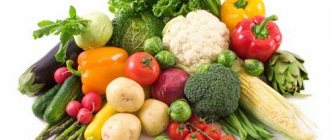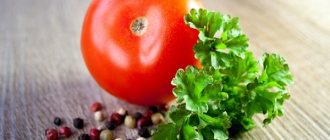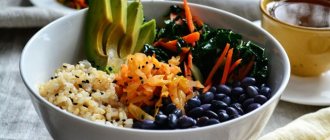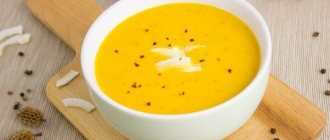Up to 20% of the world's population has food sensitivities or intolerances. An elimination diet is one way to help identify specific foods or ingredients that are responsible for symptoms. Nutritionists and allergy specialists may recommend this diet.
Certain food groups and specific foods may increase symptoms of gastroesophageal reflux, migraines, autoimmune disorders, and irritable bowel syndrome (IBS), and a doctor may recommend an elimination diet for those who are unsure of their causes.
The diet involves avoiding several foods that cause symptoms. Over time, the person resumes eating these foods, one by one, until they can determine whether any of them caused or worsened symptoms. People can then avoid these foods in the future.
What is an elimination diet?
This diet plan, in combination with drug treatment, ensures long-term remission by eliminating chemical irritants that cause allergic reactions, provoking the development of edema and inflammation.
An elimination diet is a special therapeutic diet of relatively short duration. It contains no food ingredients that cause unwanted reactions of the immune system and gastrointestinal tract.
At the final stage of the diet, excluded products are added to the menu one at a time to determine their tolerance by the body. During the elimination period, the diet contains only chemically neutral foods.
A comprehensive nutrition program helps quickly identify chemical irritants to which you are hypersensitive. The point of such a diet is to facilitate and accelerate natural detoxification mechanisms.
With allergic diseases, they are in a depressed state, and the removal of toxins is greatly slowed down. An elimination nutrition program usually lasts 2-3 weeks. During this time, allergic and inflammatory symptoms significantly weaken.
Infographics on the topic
In continuation of the topic, be sure to read:
- Treatment tables (diets) No. 1-15 according to Pevzner: food tables and diet
- How to eat before and after intestinal colonoscopy?
- Rectal fissure: causes, symptoms and treatment of pathology
- Irritable bowel syndrome: symptoms and treatments
- Basic principles of diet No. 4 for intestinal diseases
- Diet for diarrhea: nutritional principles, foods and menu for the week
- Diet after removal of intestinal polyps: nutritional principles, foods and menu for the week
- Diet for irritable bowel syndrome: nutritional principles, foods and menu for the week
- Gluten-free diet: list of allowed and prohibited foods, menu for the week
- Diet for colitis: basic principles, products and menu for the week
Indications
An elimination nutrition program is prescribed for therapeutic purposes for celiac disease and impaired intestinal motility. It is effective for chronic inflammatory pathologies of the kidneys and urinary system.
An elimination nutrition regimen is indicated for patients with impaired intestinal motility. It is used to suppress the symptoms of seasonal exacerbations of chronic inflammatory pathologies.
Clinical indications for prescribing an elimination diet:
- atopic dermatitis;
- Quincke's edema;
- cross food allergies;
- bronchial asthma;
- hives;
- hay fever;
- gluten enteropathy;
- glucose-galactose malabsorption;
- high degree of intoxication of the body;
- liver dysfunction;
It is prescribed when there is a clinically proven role of a certain food product in increasing blood pressure, increasing the concentration of cholesterol in the blood, or developing urinary or cholelithiasis.
A therapeutic nutrition program often has a diagnostic purpose. It is prescribed to clarify the list of products and chemical compounds that provoke anaphylactic reactions when the information content of standard laboratory allergy tests is low.
Positive sides
The elimination diet for allergies has a number of positive features, including:
- Complete disappearance of allergic reactions.
- Improved overall well-being.
- Weight loss.
- Increased strength and energy.
- Cleansing the skin.
- Boosting immunity. Chronic and seasonal diseases practically do not bother patients after the diet.
- Nutritional and balanced diet.
- Versatility, suitable for people of different ages.
Despite the obvious advantages of this diet, it also has a number of disadvantages.
Basic principles of nutrition
Treatment of chronic pathologies of allergic origin requires correction of the diet with the elimination of chemical irritants that provoke anaphylactic reactions. Without this, drug treatment does not give the expected effect.
This approach is especially effective for drug, food and inhalation anaphylaxis. The basic principle of diet correction is to exclude foods with etiologically significant allergenic substances.
It is replaced with a chemically neutral and well-accepted product with a similar protein content and identical energy value. This diet is aimed at reducing immune hyperactivity and providing the body with the necessary nutrients.
An elimination diet is a nutritional system that contains only fresh foods of natural origin.
It does not use:
- shelf-stable dishes;
- chemical flavor enhancers;
- preservatives;
- synthetic dyes.
When forming the menu, cross-influence and compatibility of products are taken into account. The biogenic properties of dishes change significantly during heat treatment and freezing.
Advantages and disadvantages
The diagnostic value of such a diet lies in the detection of previously unknown allergens. An elimination diet reduces or completely eliminates intestinal irritation and dyspeptic symptoms. They can occur even when eating natural foods in moderation.
Other benefits of an elimination diet:
- financial inclusion;
- simplicity and speed of cooking;
- physiologically complete diet;
- individual approach to identifying allergens;
- increasing the duration of remission in chronic inflammatory and anaphylactic pathologies;
- versatility and independence from gender, age, patient history;
- reduction of body intoxication;
- balanced nutrition enriched with nutrients.
This food system has minimal disadvantages. These include a limited diet, the need to constantly coordinate the menu with a gastroenterologist or nutritionist.
Pros and cons of the method, contraindications
Benefits of the diet:
- Allergy symptoms become less severe or disappear altogether.
- Easy to prepare meals because you can use readily available products.
- Allergen identification.
- Suspension of autoimmune processes.
- No caloric restriction.
- Reducing toxic load.
The essence of the diet is the consistent elimination of dangerous foods from the diet . If giving up one of them leads to the disappearance of signs of the disease, then it is this one that is the main irritant.
After the symptoms subside, the patient again begins to consume allergy-provoking foods. If his condition worsens within 4 days, then the conclusions were made correctly.
Disadvantages of the diet include:
- Duration - sometimes it takes a year to get results.
- The need for constant consultation with a doctor.
- Menu restrictions.
- Inability to eat in cafes and restaurants, where it is difficult to find suitable food.
There are no contraindications for such nutrition, but you should not use it for weight loss, since there will be no obvious effect. Before starting a diet, you should visit a doctor.
Diet stages
Elimination nutrition can be strict or liberal.
Elimination Diet Stages
It depends on the:
- focus of the diet – therapeutic, diagnostic, preventive;
- severity of clinical symptoms;
- the nature of the pathological disorder;
- frequency of exacerbations;
The therapeutic and diagnostic diet consists of 3 consecutive stages - preparation, exclusion diet, reintroduction. An important factor in menu planning is cross-response.
It is based on the antigenic similarity of the properties of the products consumed. The cross-reaction effect occurs when the sequence of amino acid compounds in the protein fractions of allergenic substances is 70% identical.
When an anaphylactic irritant is identified, products containing ingredients that enter into a pathogenic chemical interaction with it are excluded from the elimination diet.
Preparation
This stage begins with 3 fasting days to remove waste and toxins from the body. Drinking plenty of fluids is recommended. Pure water or green tea is suitable. It is necessary to free the body from the maximum possible amount of glucose.
It promotes the development of fungal microflora, the waste products of which are potent provocateurs of allergic reactions. High-protein foods are excluded from the diet.
They are saturated with known etiologically significant food allergens. Cereals, legumes, and nuts are saturated with such substances. Cleansing the body of toxins, waste and other harmful substances aims to create favorable conditions for the transition to the next stage of the diagnostic and treatment diet.
Elimination
This stage is aimed at identifying an unidentified provocateur of allergic reactions, exacerbations of chronic diseases and inflammatory processes. All products containing chemical compounds with known and clinically proven allergenic properties are removed from the diet.
The elimination diet at this stage is gentle and involves avoiding potentially allergenic foods and food additives. At this time, methods of culinary processing of ingredients become especially important.
Acceptable cooking methods:
- stewing;
- cooking;
- steam bath;
- baking;
- grill.
Dishes are eaten unsalted. Sodium chloride disrupts blood circulation, increases the fragility of vascular walls and blood pressure. It weakens bone fibers by leaching calcium from them.
Table salt is especially dangerous for people with cardiovascular diseases, gastrointestinal pathologies, and neurological disorders. Therefore, it is excluded from the elimination diet.
Food seasonings are a known allergenic factor. Spices and herbs are not used in therapeutic and diagnostic nutrition. During the elimination phase, food should be eaten in small portions, but often - 5-6 times a day.
The menu is formed in consultation with a gastroenterologist or nutritionist. If allergic manifestations do not disappear, sequentially exclude 1 product from the diet every other day.
Even with a slight improvement in the clinical picture, the conclusion suggests itself about the anaphylactic properties of the product. The elimination stage lasts 21 days. It is not recommended to prolong it, since a deficiency of biologically significant substances will begin to be felt.
Reintroduction
The final stage of the diagnostic and treatment diet is needed to add excluded food ingredients to the basic menu. This is the stage of tracking individual allergy triggers and testing for food biocompatibility.
Potentially dangerous ingredients are introduced into the diet 1 every 3 days to assess the current clinical symptoms and their impact on the dynamics of the pathological condition. Products and nutrients with known allergic properties that were previously excluded from the menu are added in large quantities.
This approach allows you to quickly and reliably identify the provocateur of anaphylactic reactions and exacerbation of chronic diseases. The body's response to the added product is monitored over the next 3 days. If the condition has not worsened, the food ingredient is retained in the basic menu.
The elimination stage lasts 2-4 weeks until a clear result is obtained. At the end of this period, you can try again adding a product with unknown allergic properties to the diet. It is administered in larger quantities. This makes it possible to track the cross-reaction effect.
Types of basic diets for allergies
In case of diseases of an allergic nature, in addition to treatment, specialists work on correcting the patient’s diet, excluding from the menu products that contribute to the development of a negative response of the body according to the food type.
The patient is required not to disrupt the diet plan. The main recommendation for allergy sufferers is to prepare food in accordance with the principles of a healthy diet, by baking, steaming and boiling. You should avoid fried foods, fast food, smoked meats, marinades/pickles, spicy foods and all prepared foods with dyes/preservatives and other additives.
If an allergy to the yolk of an egg is detected, the protein can be supplied to the patient’s body by including fish, poultry, meat and broth in the diet with the addition of approved products. Invaluable benefits will come from fermented milk products, various cereals and cereal casseroles that do not contain eggs.
It is prohibited to include in the menu:
- egg of any bird;
- all dishes that are not prepared without eggs;
- bakeries, pastries and pasta;
- confectionery;
- mayonnaise.
When an allergic reaction to a fish dish occurs, it is recommended to completely exclude this storehouse of easily digestible protein from the diet for the duration of the diet. You should also not eat foods that contain caviar or fish oil.
This type of food allergy requires a complete refusal to consume:
- cottage cheese;
- any dishes containing milk from a cow;
- fermented milk products;
- margarine;
- yogurt;
- serums;
- whole milk;
- butter;
- cheeses of any kind.
If an allergy to gluten is detected, the patient should be strictly prohibited from eating all cereals (barley, wheat, oats, rye) and dishes containing them. You should also pay attention to products that contain vegetable protein as a by-product.
Thus, those products whose composition is unknown to the patient should not be included in your menu. It is necessary to carefully read the list of product ingredients on the packaging, and if this is not possible, avoid using it for food altogether.
When you have to eat ready-made food (in canteens/restaurants), it is preferable to choose simply prepared dishes: boiled meat, sliced vegetables instead of salad with dressing, etc. You should not try complex dishes with sauces and gravies, as well as breaded and battered dishes.
There are only two main types of diets that allergists recommend to their adult patients.
This is a nonspecific (hypoallergenic) and elimination diet for allergies in adults.
Nonspecific nutrition is prescribed to reduce the overall load on the body and such nutrition is used for any type of intolerance reactions.
An elimination diet is used when it is known that food allergies are developing.
What is possible and what is not?
The first vegetable-based dishes without fried ingredients, seasonings and salt are considered allergy-neutral. To add a pleasant taste, you can add fresh or dried garden herbs.
List of foods allowed during the elimination diet:
- boiled or stewed rabbit, turkey, veal meat;
- buckwheat, wheat and oatmeal porridge without salt;
- mashed potatoes with water;
- pasta;
- cracker;
- sunflower and olive oil;
- cabbage - white cabbage, broccoli or Brussels sprouts;
- eggplants and zucchini;
- fruits – peaches, apples, pears;
- berries - gooseberries and black currants;
- low-fat cottage cheese and cheese;
An elimination diet is a special therapeutic and diagnostic nutrition system, which includes freshly squeezed juices and berry fruit drinks. Other suitable drinks include mineral water, weak tea, and instant chicory.
Any cruciferous vegetables and nightshade crops are devoid of allergenic properties. Watercress and artichoke have the ability to quickly cleanse the liver.
Individual intolerance has not been recorded:
- umbrella crops - fennel, dill, others;
- cucumbers;
- pumpkins;
- mushrooms;
- edible seaweed;
- some types of fish - halibut, salmon, mackerel;
An elimination diet includes coconut oil, fruits and berries with a low glycemic index. Fermented foods are shown - sauerkraut, pickled cucumbers and tomatoes.
Products prohibited for consumption during an elimination diet:
- carrot;
- red and capsicum peppers;
- tomatoes;
- citrus;
- bananas;
- mango;
- grape;
- nuts;
- raisin;
- rice;
- confectionery;
- sauces and seasonings;
- condensed milk;
- cream;
- sour cream.
High-fat cheeses and cottage cheese, pork, and smoked sausages are not included in the diagnostic and treatment diet.
Sample Elimination Diet Menu
The diet is adjusted depending on the stage of the disease, the frequency of exacerbations, and the individual biological characteristics of the patient’s body. The doctor draws up the menu in such a way as not to make it monotonous and not provoke vitamin starvation.
Approximate 7-day meal plan:
| Day of the week | Breakfast | Dinner | Dinner |
| Monday | Oatmeal with water, biscuits, green tea without sugar. | Cauliflower soup, durum wheat pasta with boiled chicken breast, medium-sized apple. | Vegetable stew with steamed turkey cutlet, rosehip juice. |
| Tuesday | Low-fat cottage cheese casserole, freshly squeezed fruit juice. | Sorrel soup without eggs, buckwheat porridge with butter, baked veal. | Grilled chicken with stewed broccoli. |
| Wednesday | Cheesecakes, berry juice. | Buckwheat soup, sauerkraut with turkey meat. | Oatmeal with chicken meatballs. |
| Thursday | Wheat porridge, berry smoothie. | Green borscht, spaghetti with steamed chicken cutlet. | Stew with boiled chicken breast, compote of fresh apples and pears. |
| Friday | Semolina casserole, fresh fruit, low-fat kefir. | Fish soup, buckwheat porridge with rabbit meat cutlet. | Noodles with mushrooms, broccoli and low-fat grated cheese. |
| Saturday | Buckwheat porridge in milk with vanilla sugar, instant chicory. | Vegetable soup, stewed potatoes with veal. | Baked mackerel, fresh apple, fruit compote. |
| Sunday | Pancakes stuffed with boiled and ground chicken fillet. | Buckwheat soup, baked salmon, drinking yogurt. | Low-fat cottage cheese with vanilla sugar and berries, biscuits with butter. |
The approximate composition of the diet varies depending on:
- purpose of the diet;
- medical prescription;
- the patient's current condition;
- taste preferences.
Each ingredient can be replaced with a safe analogue with known hypoallergenic properties.
For allergies
The body's predisposition to anaphylactic reactions to certain food irritants is included in the list of main indications for prescribing an elimination diet. This nutritional system reduces the antigenic load and blocks the hyperactivity of the immune system to certain chemical compounds.
An elimination diet is a therapeutic way to prolong the period of remission and avoid severe exacerbations without the use of potent antihistamines.
In case of allergies, exclude from the diet:
- chicken eggs;
- cow's milk;
- nuts;
- shellfish;
- red fish;
- legumes.
During the period of exacerbation, you should not drink alcoholic beverages, foods containing gluten, or products made from wheat flour. Traditional homemade cakes are replaced with biscuits made with quail eggs.
To prepare such a culinary product you will need:
- quail eggs – 40 pcs.;
- table salt – 5 g;
- granulated sugar – 150 g;
- rye flour – 200 g.
This modest list of products allows you to get an airy dessert with hypoallergenic properties.
The preparation method consists of the following sequence of actions:
- First you need to break 10 quail eggs and separate the whites from the yolks.
- They are distributed into separate containers.
- Then add salt to the whites and beat.
- Pour 75 g of sugar into the resulting soufflé.
- Beat the yolks with the remaining half of the sweet ingredient and mix with the whites.
- Next, add the sifted flour.
The resulting mass is placed in a special baking dish. It is sent into a hot oven. The biscuit is baked for 30 minutes. at a temperature of about 200°C.
For atopic dermatitis
With this disease, it is important to create a hypoallergenic diet that will help maintain performance at the same level. Patients with atopic dermatitis should exclude from the diet foods that provoke the release of histamine into the blood.
These include:
- smoked sausages and frankfurters;
- canned fish;
- hard cheese;
- chocolate;
- candies.
Strict adherence to diet is an important factor in successful treatment of pathology, increasing the duration of remission and reducing the frequency of exacerbations.
Patients with atopic dermatitis are shown:
- cereal porridge;
- dairy products;
- boiled and steamed beef meat;
- White cabbage;
- green apples.
The diet often includes minced beef patties.
To prepare them using steam you will need:
- lean beef tenderloin – 300 g;
- onions – 1 pc.;
- potatoes – 5 pcs.;
- green onions - 1 stalk.
If you are not allergic to dairy products, you can add 15 g of low-fat sour cream to the recipe.
Cooking method:
- First you need to grind the meat into minced meat.
- The onions are peeled and passed through a fine grater. It is mixed with minced meat.
- Finely chopped green onions are added to the culinary composition.
- The minced meat is combined with sour cream, kneaded thoroughly and frozen in the refrigerator for 30 minutes.
- Next, cutlets are formed from the minced meat.
- The potatoes are peeled and cut into small slices. It can be mixed with carrots.
- Then water is poured into the pan, placed on a gas stove and a colander with chopped vegetables is placed on top.
- After 5 min. Beef chops are placed on top of the potatoes. Cover the colander tightly with a lid and steam the cutlets for 20-25 minutes.
Cook over medium heat so that the water simmers constantly. It is added as it evaporates.
For pregnant and lactating women
The diet during pregnancy and lactation requires the use of nutrient-rich foods. At the same time, the diet should not harm the woman’s health or cause allergic reactions in the newborn.
In such a physiological state, it is necessary to exclude from the menu:
- any conservation;
- coffee;
- alcohol;
- hot spices;
- products with synthetic ingredients and artificial colors;
- cow's milk;
- smoked meat products;
- Exotic fruits;
- semi-finished products;
If a woman is prone to allergic reactions or has a history of chronic diseases, the doctor prepares a personal diet for her. There is no average or universal menu.
Recommendations from nutritionists
You can prepare meals for several days, but they must be eaten fresh. Refrigeration changes the chemical composition and physical properties of food. Therefore, the temperature effect on products is agreed upon with the attending physician. It is advisable to eat food at a certain interval, without missing sessions.
This approach is especially important when the elimination diet has diagnostic purposes and is aimed at identifying an unidentified food allergen. It is recommended to consume natural enterosorbents - dietary fiber, green fruits and vegetables - during the preparatory period. This will speed up the cleansing of the body.
Useful tips
The elimination-reintroduction diet is not the hardest diet. A lot is allowed here, you just need to get used to new dishes. It takes about 2-3 days to adapt to the food system. To make the diet easier, you should:
- Plan your menu regularly.
- Eat simple food. It should take a minimum amount of time to prepare.
- Eat often and regularly; the principles of fractional meals are suitable here.
- Healthy food should always be at hand, only in this case you can avoid the temptation to eat something harmful.
- Avoid foods that can cause allergies at all costs.
- Try to eat as many fresh vegetables and fruits as possible.
- Drink clean water in an amount of at least two liters per day.
- If an allergic reaction to protein is detected, then not only eggs, but also the dishes to which they were added should be excluded from the menu. All dairy products should also be removed.
- Don't forget about cross allergies.
- The optimal duration of the diet is one year.
Do not despair, because the elimination diet is a temporary limitation and after a provocative test, which is done against the background of complete remission, the product can be included in the diet again. Of course, if there is no negative reaction to it.










